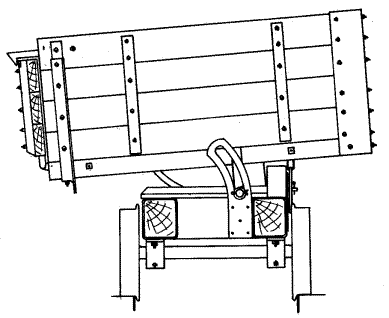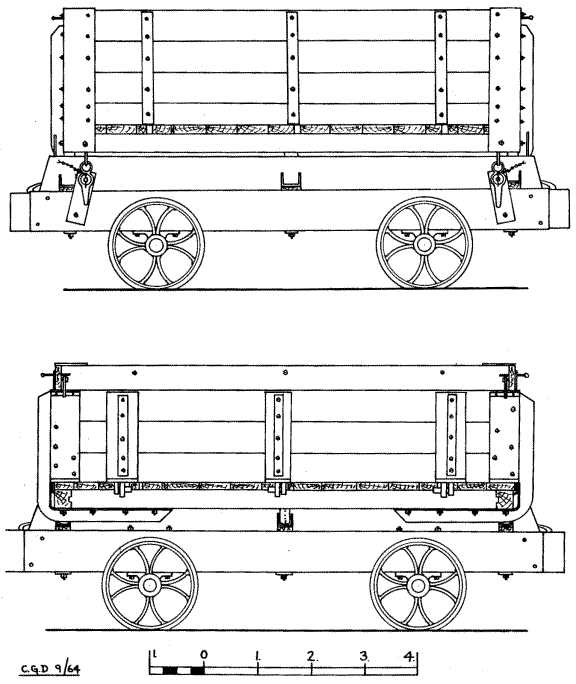
| THE INDUSTRIAL RAILWAY RECORD |
© MARCH 1967 |
NARROW GAUGE WAGONS
(6) THE SCALDWELL 3'- 0" GAUGE WAGON
C. G. DOWNThis must be one of the best-known types in the country, examples having been preserved at Kettering and at the Brockham Museum of the Narrow Gauge Railway Society. The drawing depicts the one at Brockham.
The wagon was probably built for the opening of the Scaldwell 3ft 0in gauge system in 1912, although it could possibly have been a. later addition to stock. The wagons at Scaldwell were built in the workshops by the ropeway terminus, but at least three or four, at Hanging Houghton, carried the plates of McLochlan of Darlington on the. chassis. Some of the Scaldwell wagons may have also been built by this firm, losing their plates when rebuilt; due to a shorter working life the Hanging Houghton wagons were probably not renewed in this way.
The wagon frame consists of two oak beams 9in by 8in in cross section and 10ft 5in long, with three transverse members and the two diagonals between them. The body is 8ft 7in x 6ft 0in x 2ft 8in deep and constructed of 2in thick elm boards of varying depths. Bolts are used in the construction of the wagon which is generally of very substantial manufacture. The body is tipped on three curved wooden supports, faced with metal, running in channel girders on the transverse frame members. On the door side of the body, a pair of bent L−girders keeps the ends of the body from spreading. The wheels are 1ft 7@in diameter and 2ft 10in back-to-back; the wheelbase is 5ft 0in. The axles run in the usual "n" slot, with a bolt across the opening of the "n" to stop them from falling out.


To simplify the drawing, the side elevations of the wagon have been drawn as if the body were horizontal to the frame. The end elevation shows the angle at which the body rests normally. I should like to thank Roger West for providing some of the historical information.